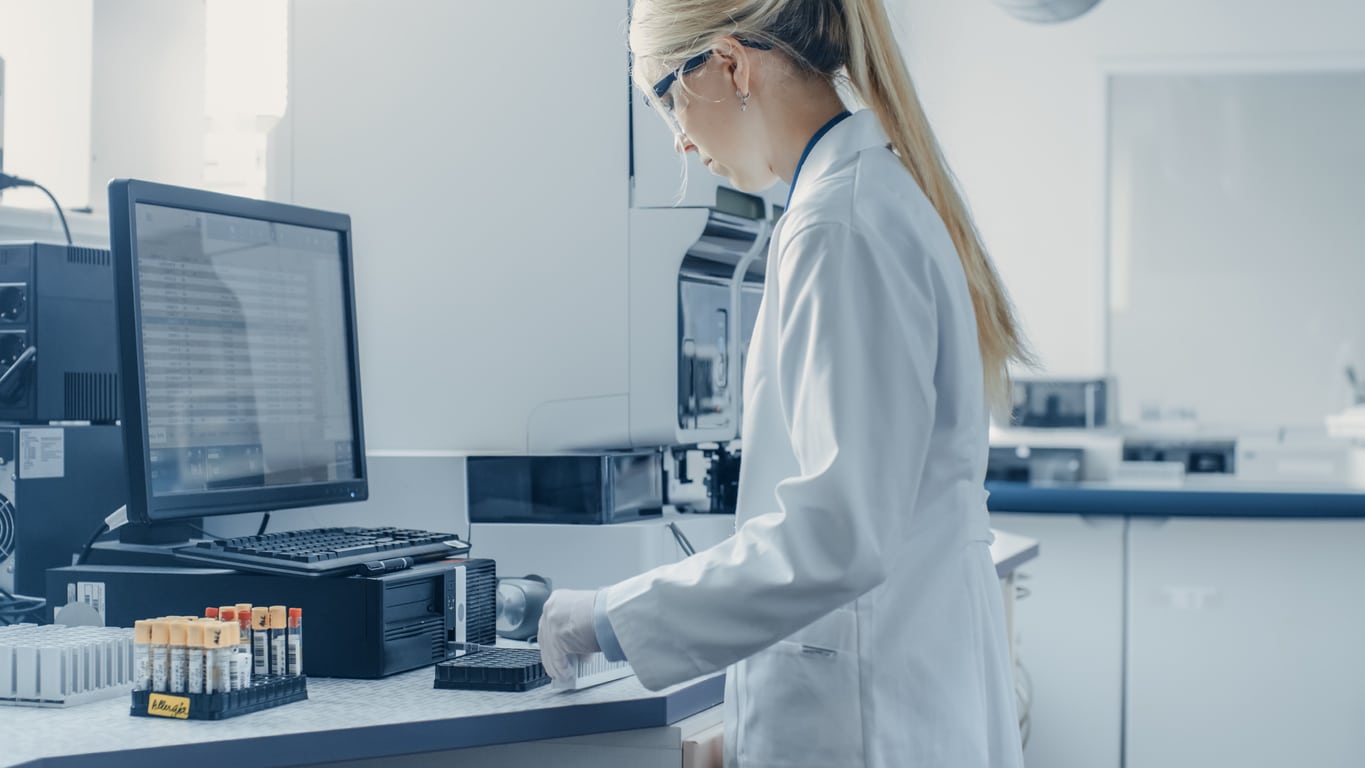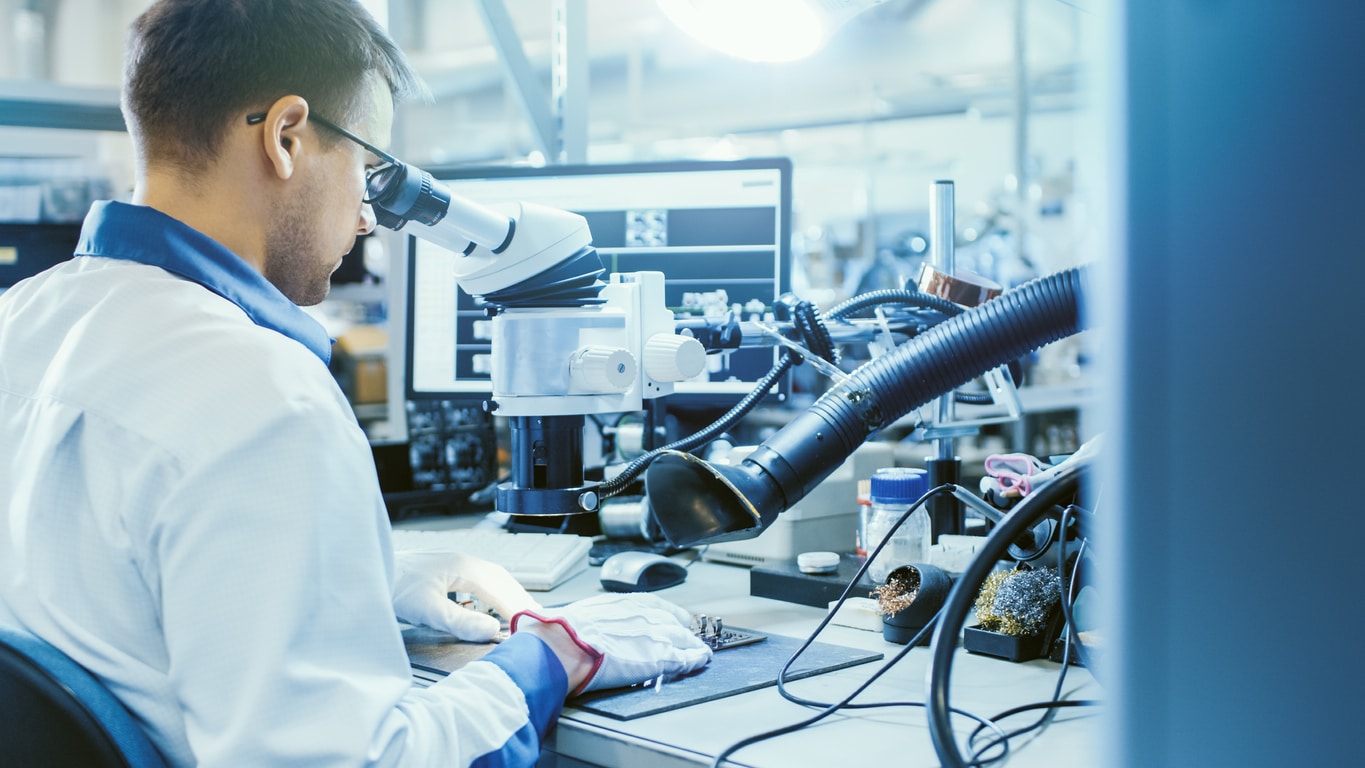Every business or organisation which relies on digital technology and data storage is vulnerable to the growing threat of cybercrime. Each year, thousands of organisations fall victim to malware, ransomware and other cyber-attacks – with hackers targeting every sector with indiscriminate efficiency, exploiting weaknesses in digital systems.
To help laboratory owners and managers safeguard valuable intellectual property and data, we’ve put together a guide on the latest best-practice advice on how to enhance the data security of your laboratory.
Quick links
Why data security is vital for laboratories
How to maintain data security in a lab environment
Safeguarding hardware and system security
Why data security is vital for laboratories
Such is the threat of cybercrime that it’s now considered among the foremost dangers facing businesses and organisations. In a matter of seconds, cybercriminals can access and retrieve sensitive information – be it personal information, financial data, or confidential material and research from within a laboratory database.
Given the large quantity of data, research, patient information and critical intellectual property commonly stored on digital laboratory systems, it’s crucial that lab managers and key stakeholders consider the threat of cybercrime. Data security is invariably one of the biggest threats facing modern laboratory organisations, so it deserves its own chapter in your lab’s risk assessment handbook.

How to maintain data security in a lab environment
Never has it been more important for laboratories to invest in and implement data security systems and protocol. Out-dated systems, poor processes and rudimentary technology can all contribute to weaknesses and vulnerabilities in a lab’s data security infrastructure – so a considered, comprehensive approach is crucial in safeguarding digitally-stored assets.
Below, we offer practical tips on how to maintain data security in a laboratory.
Data hosting and security
Consider where you currently store and host data, information and research; what security provisions are in place to protect it from cyber-attacks? Many labs fall short in this area, lacking both the expertise and monetary resources to invest in and maintain robust data security systems.
One of the very best ways to maximise data security is to invest in LIMS, or laboratory information management system. This is a data storage and management system which provides robust security features against the threat of cybercrime – including encryption and firewall provision – as well as a range of benefits besides.
Learn more about the benefits of LIMS and how to implement the system in our in-depth guide.
External cloud-based hosting
For smaller labs looking for a flexible yet secure and reliable way to host research and intellectual property, cloud-based data storage is an affordable and simple solution. Fully scalable, this ‘software-as-a-service’ approach to lab data storage provides the benefit of firewall and encryption protection, whilst affording full collaboration and data management between internal teams and personnel.
Naturally, leaning on a single external hosting partner for data storage isn’t for everyone. With less control over how your data is stored and kept secure, there’s an inherent risk in using a cloud-based data store as your principal database management suite. That said, with adequate research and investment, there are many cloud storage solutions out there capable of meeting the needs of the majority of modern laboratories.
 Application security
Application security
Most modern laboratories rely on a range of systems and applications during day-to-day operations, many of which are front-loaded with their own security options and preferences. It’s crucial that such features are implemented and put to use, ensuring that all potential vulnerabilities and gaps are plugged.
Application security often begins with selecting strong access passwords; we can’t overstate the importance of this. Too often, cybercrime occurs because of simple slipups like using insecure passwords, so don’t allow complacency in this area to compromise the security of your data systems.
Some laboratories may wish to implement role-specific access controls to ensure that data remains secure and certain information remains confidential. Role-based access control (RBAC) allows you to control who can access specific applications and data sets, so you can easily monitor and manage valuable intellectual property.
Safeguarding hardware and system security
In many cases, the problem of lax data security rests not with data systems and network security, but with the laboratory’s IT hardware itself.
Given how stretched some research centres are from a funding perspective, updating IT technology and hardware often comes further down the list than other essential resources. However, out-of-date hardware can present a detrimental vulnerability in your data storage infrastructure – leaving your operation at risk, and undermining other security features which you have in place.
Here, we take a look at the essential hardware and systems you should implement to guarantee maximum data security and enhanced collaboration.
Up-to-date operating systems
Investing in new operating systems will not only afford greater protection for your data, but will also give your team a reliable and efficient platform for day-to-day working. Leaning on out-of-date technology is both a risk to your data security and an inefficiency which can slow your team down and result in a waste of valuable resources.
 Interfaced systems and instruments
Interfaced systems and instruments
Many instruments and systems used in modern labs provide network-based communication, collaboration and data sharing – connecting with your existing network to allow seamless data control and storage. If these instruments aren’t kept up-to-date, the connection between them and your network could become compromised, leaving your systems vulnerable to cyber-attack. Make sure that instruments are renewed and updated regularly to keep them in line with the rest of your network.
Mobile devices
From tablets to smartphones to wireless research devices; the majority of modern laboratories now use mobile devices as part of their day-to-day operations. Such devices afford greater flexibility and usability, but the connection between them and your network can be easily compromised if the right steps aren’t taken to secure them. Make sure that full authentication is in place to safeguard your network, and that any mobile devices are kept up-to-date with the latest security features to mitigate the risk of cybercrime.
If your lab needs redesigning to work optimally alongside updated data security provisions, the team at InterFocus can help. For more information about our bespoke fitted labs, visit our homepage or call our team on 01223 894 833.




